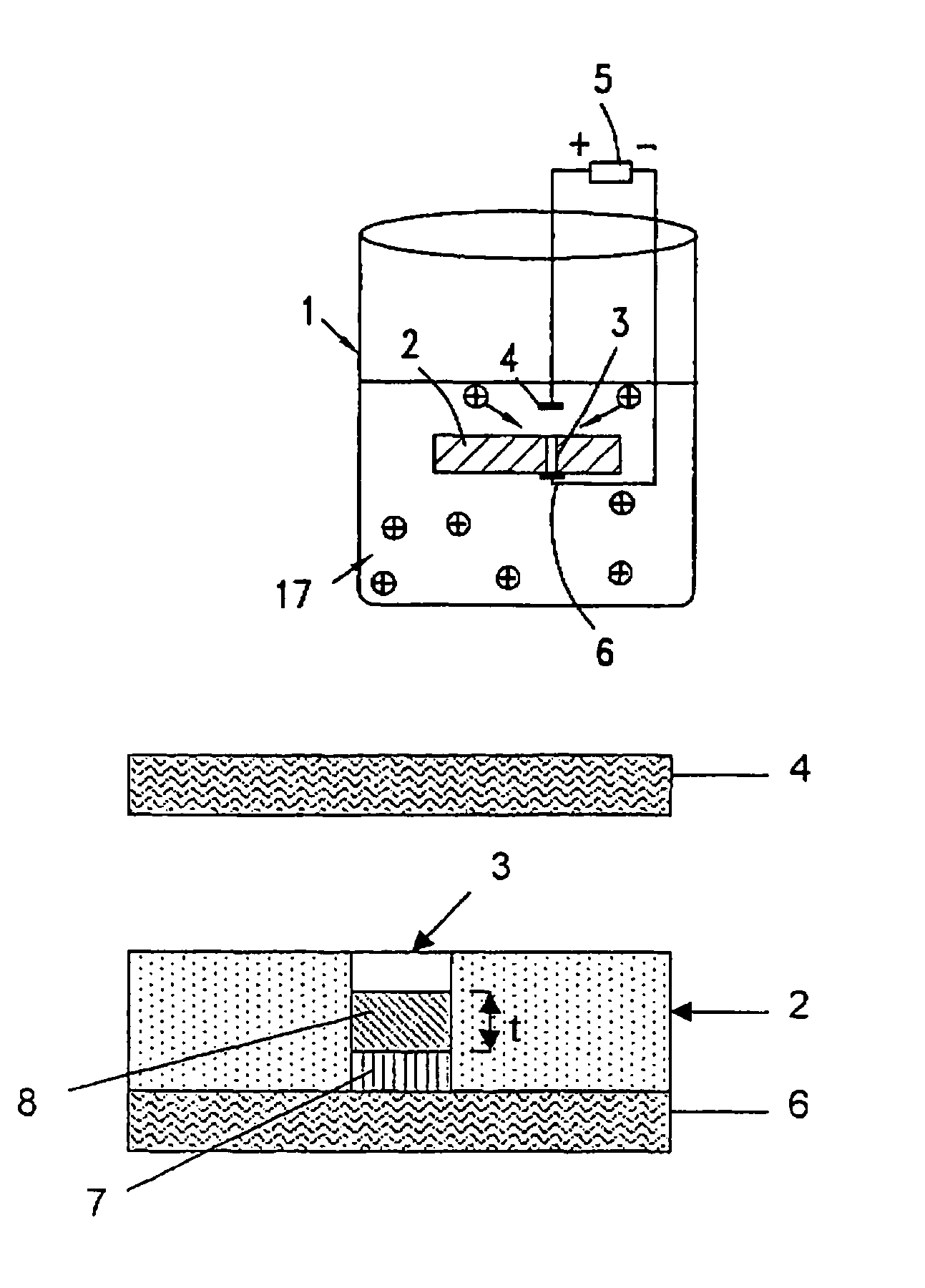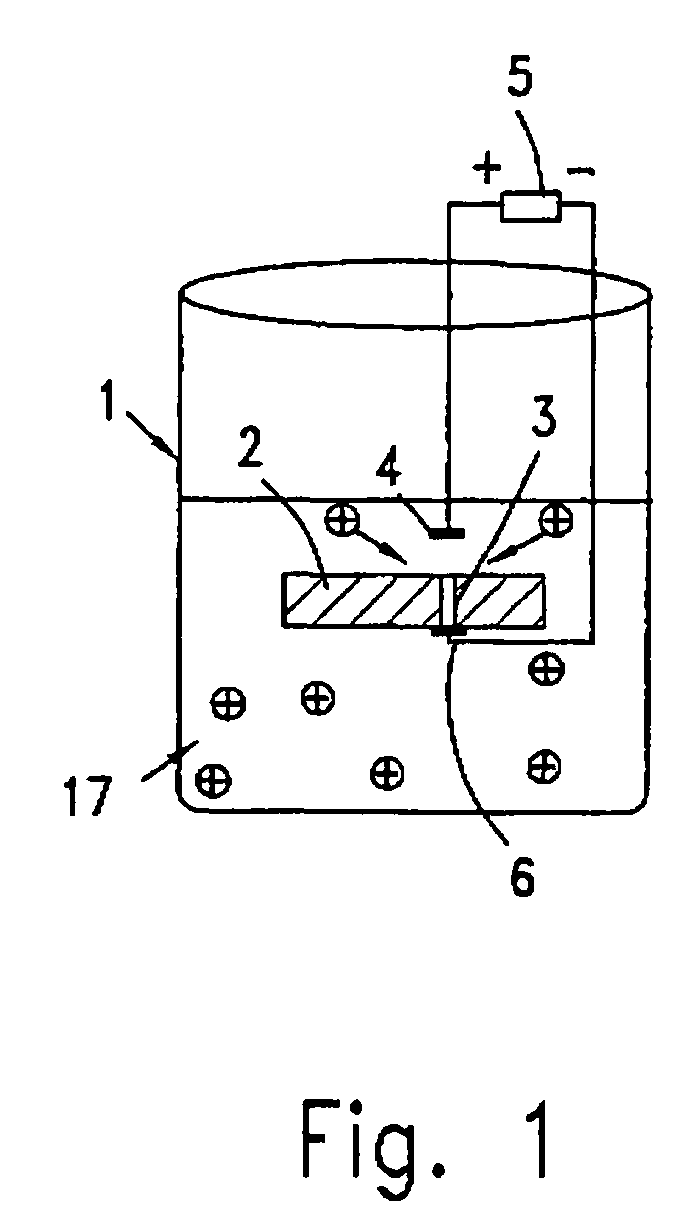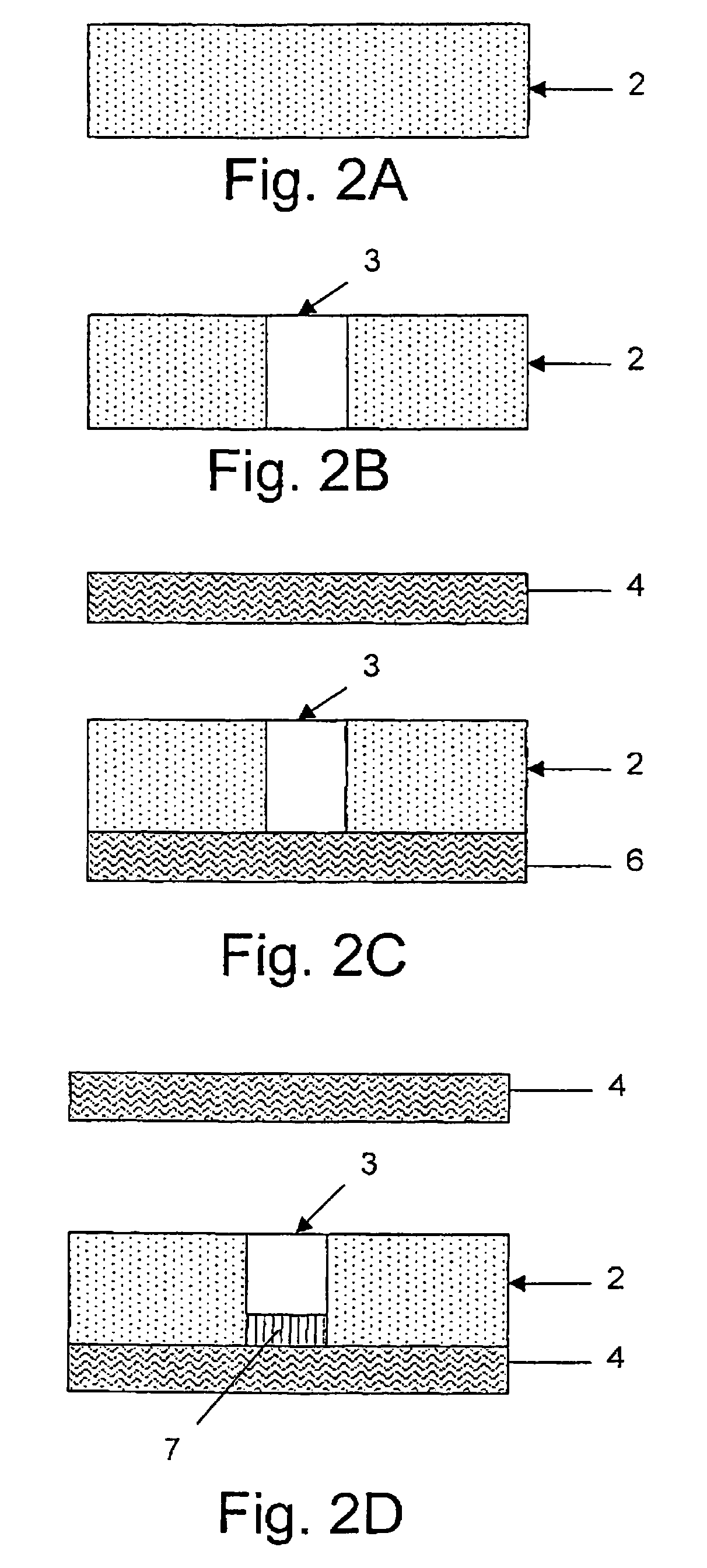Method for the implementation of electronic components in via-holes of a multi-layer multi-chip module
a multi-chip module and electronic component technology, applied in the direction of resistor housing/enclosement/embedding, resistive material coating, printed element electric connection formation, etc., can solve the problem of reducing the signal to noise ratio, unable to obtain resistors within narrow tolerances, and attendant heating
- Summary
- Abstract
- Description
- Claims
- Application Information
AI Technical Summary
Benefits of technology
Problems solved by technology
Method used
Image
Examples
Embodiment Construction
[0095]An electrophoretic deposition (EPD) cell 1 is shown schematically in FIG. 1. The cell 1 consists of a container with an electric circuit consisting of an “upper” positive electrode 4 connected through a DC power supply 5 to a “lower” negative electrode 6. The substrate and electrodes are suspended in a liquid suspension 17.
[0096]The suspension consists of particles of the material that has been chosen for the manufacture of the electrical component to which positive electrical charges have been attached by adsorption of ions. The particles are suspended in either water or any other suitable liquid, such as alcohol, depending upon the properties of the powder to be placed in suspension and the type of substrate.
[0097]As mentioned above, the particles of the suspension are chosen according to the type of passive component that should be formed and the desired values of the electrical properties of said component. Conductors are produced from metals, including gold, silver, coppe...
PUM
| Property | Measurement | Unit |
|---|---|---|
| Volume | aaaaa | aaaaa |
| Electrical conductor | aaaaa | aaaaa |
Abstract
Description
Claims
Application Information
 Login to View More
Login to View More - R&D
- Intellectual Property
- Life Sciences
- Materials
- Tech Scout
- Unparalleled Data Quality
- Higher Quality Content
- 60% Fewer Hallucinations
Browse by: Latest US Patents, China's latest patents, Technical Efficacy Thesaurus, Application Domain, Technology Topic, Popular Technical Reports.
© 2025 PatSnap. All rights reserved.Legal|Privacy policy|Modern Slavery Act Transparency Statement|Sitemap|About US| Contact US: help@patsnap.com



